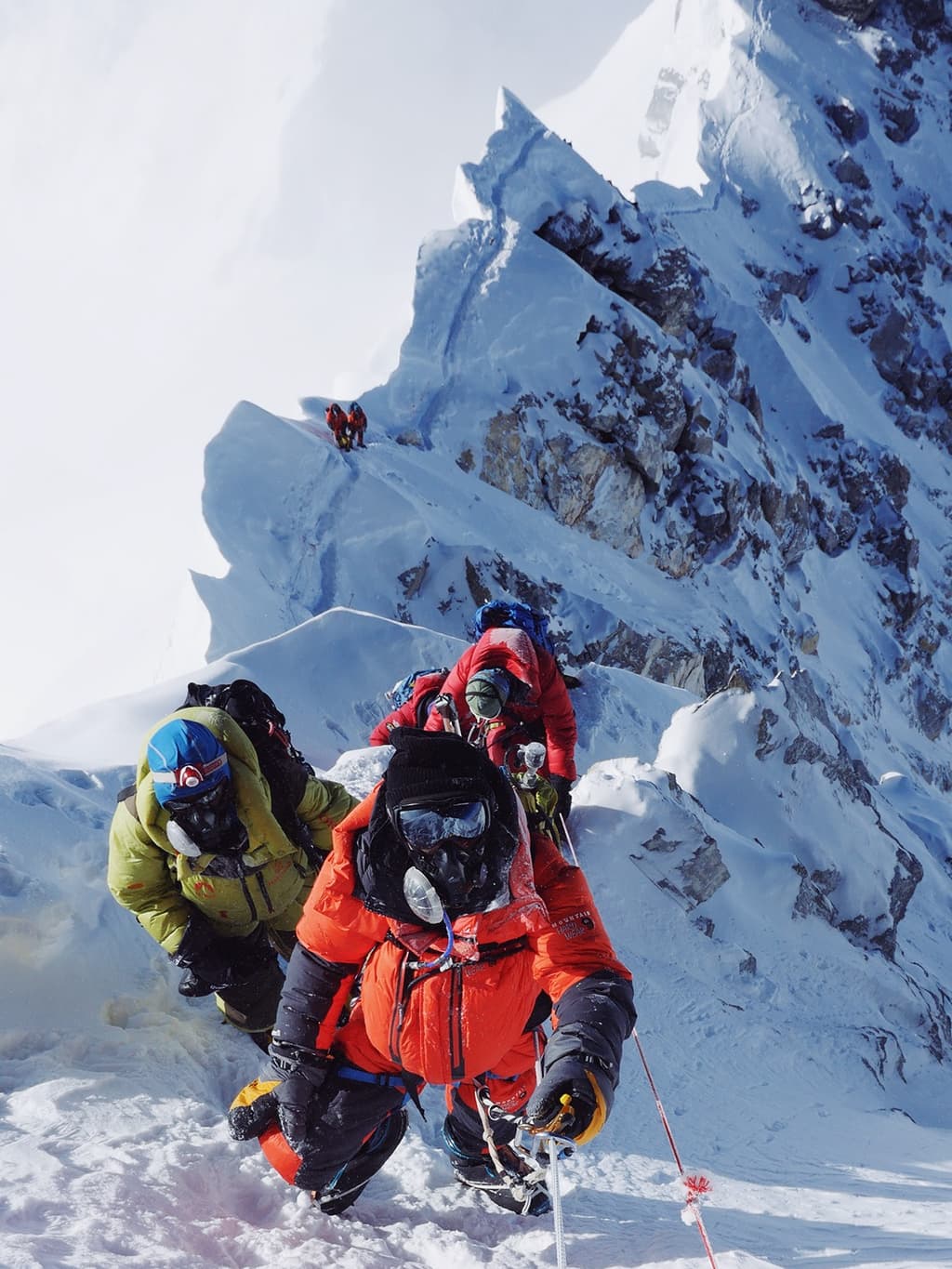Ever wondered if you could stand atop a Himalayan peak without being a seasoned mountaineer? Spoiler alert: you absolutely can.
The magic of Nepal's mountains isn't reserved for elite climbers with sponsorships and Instagram highlights. Every year, hundreds of beginners tackle their first peak climbing in Nepal, returning with stories that make their friends both jealous and inspired.
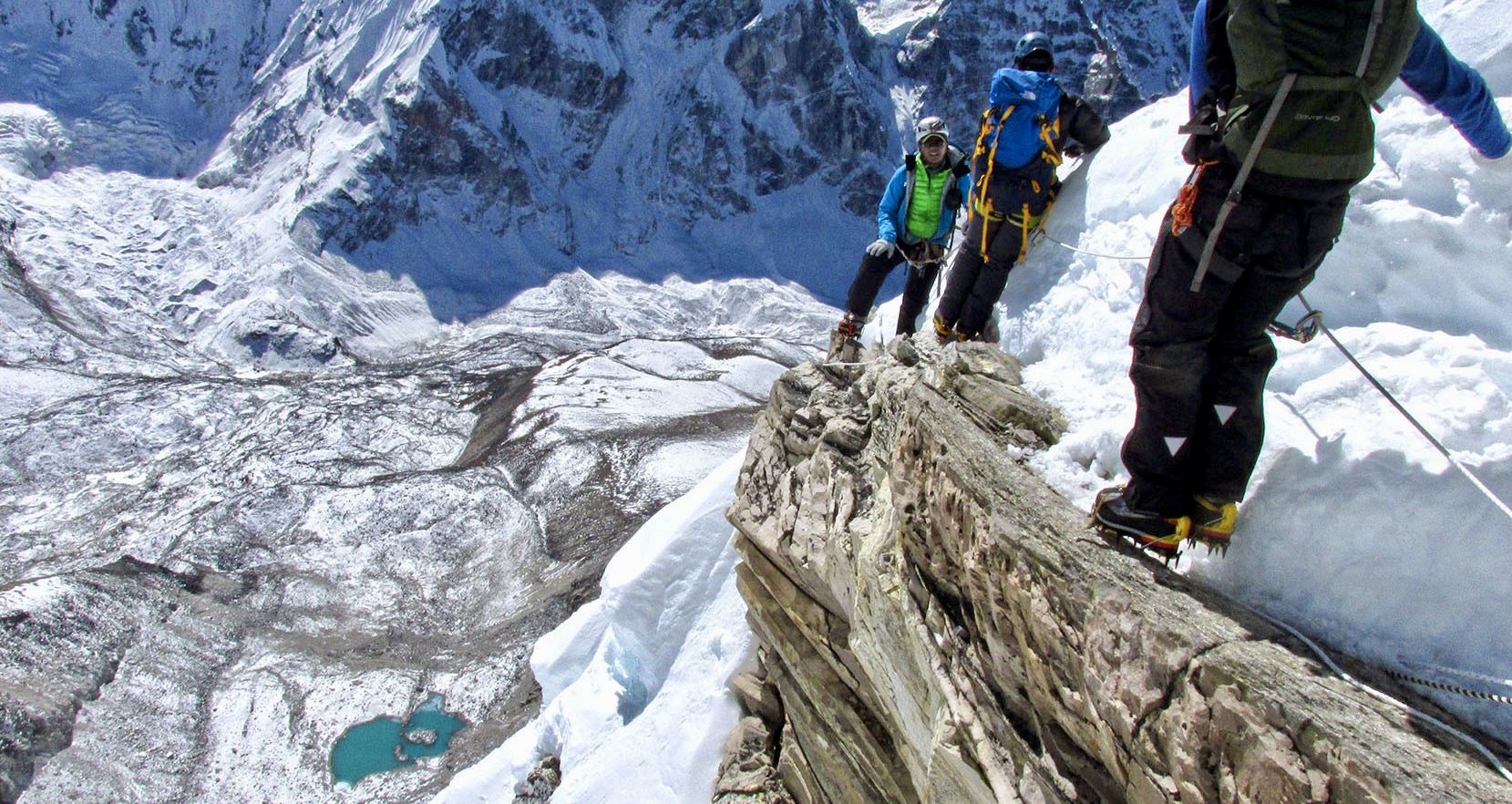
I've guided newcomers up these magnificent mountains for over 15 years. The look on someone's face when they summit Island Peak or Mera Peak for the first time? Worth every freezing predawn start and muscle ache.
But here's what nobody tells you about beginner peak climbing in Nepal: the biggest challenge isn't physical at all. It's something entirely different, and knowing it beforehand could be the difference between summit success and disappointment.
Understanding Peak Climbing in Nepal
What Constitutes a "Beginner-Friendly" Peak
Not all mountains are created equal, and that's definitely true in Nepal. When we talk about beginner-friendly peaks, we're looking at mountains that don't require extensive technical climbing skills or previous high-altitude experience.
A beginner-friendly peak in Nepal typically:
- Reaches between 5,500-6,500 meters
- Requires basic crampon and ice axe skills
- Has minimal crevasse danger
- Features established routes with proper fixed ropes
- Can be climbed in 2-3 days from base camp
- Doesn't need oxygen supplementation
The physical challenge is real, but these peaks won't throw extreme technical sections at you. We consider Island Peak (6,189m) and Mera Peak (6,476m) perfect starter mountains - challenging enough to feel like a serious achievement but manageable with proper preparation and guidance.
Differences Between Trekking and Peak Climbing
Trekking and peak climbing in Nepal are worlds apart:
|
Trekking |
Peak Climbing |
|
Typically stays below 5,500m |
Ventures above 5,500m into snow/ice terrain |
|
Requires good fitness but no technical skills |
Requires technical skills with equipment |
|
Usually follows established trails |
Involves off-trail navigation and route-finding |
|
Can often be done independently |
Requires professional guides by law |
|
Standard hiking gear is sufficient |
Specialized climbing equipment is necessary |
|
Daily return to the teahouses/lodges |
Involves camping at high-altitude camps |
When we take clients from trekking to climbing, the biggest adjustment is mental - learning to trust equipment, manage fear of exposure, and cope with the discomfort of high-altitude camping.
Nepal's Peak Classification System
Nepal categorizes its climbing peaks into specific groups:
Trekking Peaks: Despite the misleading name, these are actual climbing peaks that require technical skills. They range from 5,500m to 6,500m and need permits from the Nepal Mountaineering Association (NMA).
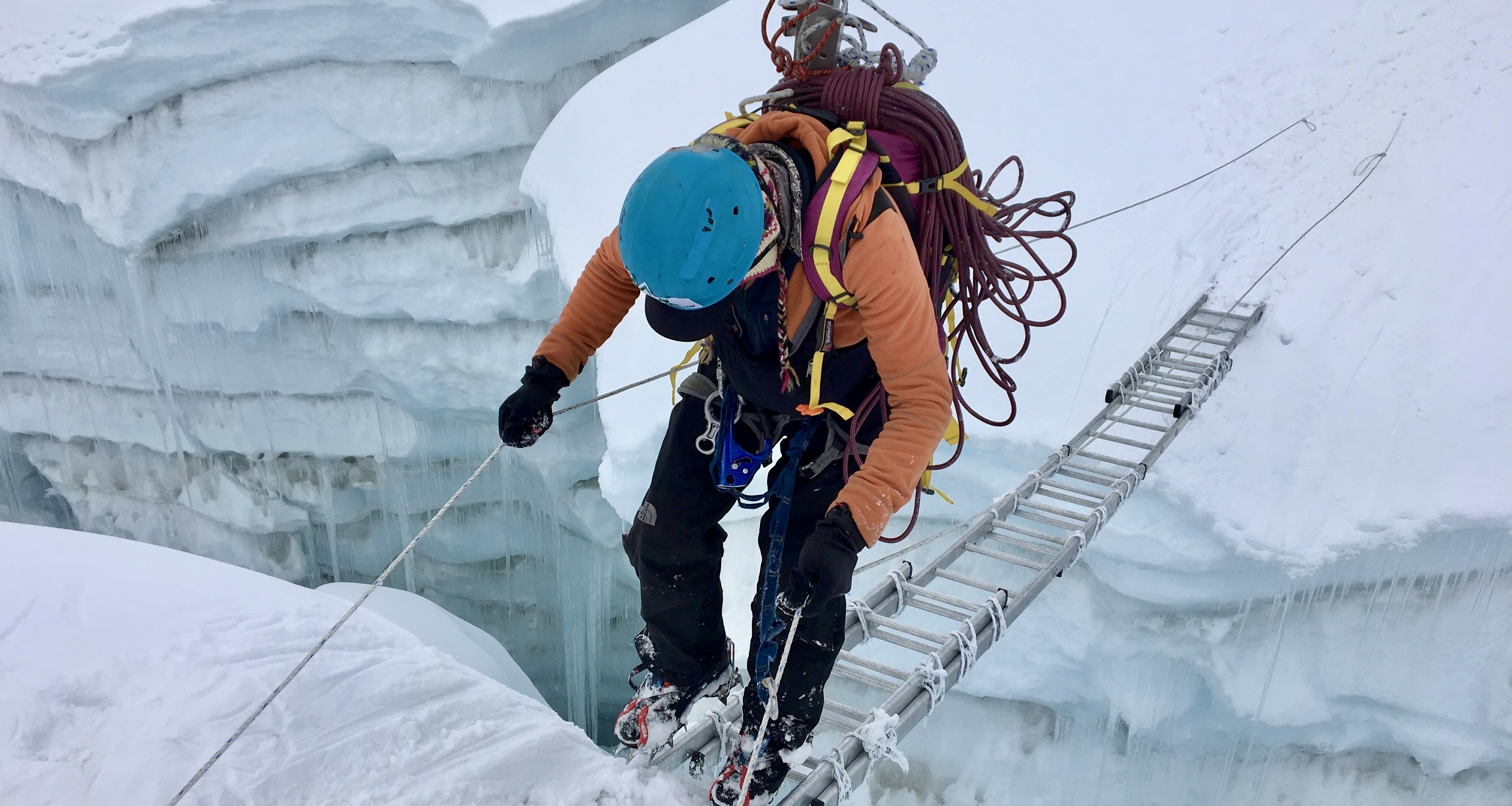
Expedition Peaks: These are mountains above 6,500m that require permits directly from the Ministry of Tourism. They're significantly more challenging and expensive.
We always remind our clients that "trekking peak" doesn't mean easy! The classification is about permit requirements, not difficulty. Island Peak is a "trekking peak" but it's still a serious mountaineering objective.
Best Seasons for Novice Climbers
Timing is everything when you're new to peak climbing in Nepal. We recommend two primary seasons:
Pre-monsoon (Spring: March-May)
- More stable weather patterns
- Warmer temperatures
- Beautiful rhododendron blooms at lower elevations
- Less crowded than autumn
- May gets increasingly humid as the monsoon approaches
Post-monsoon (Autumn: September-November)
- Clearest skies and best mountain views
- Colder temperatures than spring
- More stable snow conditions
- Peak tourist season (more crowded)
- Late November gets significantly colder
We strongly advise against winter climbing for beginners. The extreme cold, high winds, and short daylight hours create margins too slim for those still learning the ropes. Summer monsoon climbing brings avalanche risks that aren't worth taking when you're just starting out.
Essential Preparations for First-Time Peak Climbers
Physical Fitness Requirements and Training Tips
Peak climbing isn't a walk in the park - it demands serious physical preparation. We recommend starting your fitness journey at least 3-4 months before your Nepal adventure. Our climbers find that a mix of cardio, strength training, and endurance exercises works best.
For cardio, we suggest:
- Hiking with a loaded backpack (start with 10kg and gradually increase)
- Stair climbing (find a tall building and go up and down multiple times)
- Running or cycling sessions 3-4 times weekly
- Don't skimp on strength training! Focus on your legs and core:
- Squats and lunges for those steep ascents
- Planks and mountain climbers for core stability
- Pull-ups to prepare for those technical sections
Altitude is the real game-changer in Nepal. We've seen even fit climbers struggle when they hit 4,000+ meters. That's why we recommend:
- Train at higher elevations if possible
- Include interval training to improve oxygen efficiency
- Consider sleeping in altitude tents if available in your area
A typical weekly training schedule might look like:
- Monday: 45-minute run + core workout
- Tuesday: Strength training
- Wednesday: Long hike with weighted pack
- Thursday: Rest or light stretching
- Friday: Interval training
- Saturday: Long endurance session (3+ hour hike)
- Sunday: Active recovery (yoga or swimming)
Technical Skills You Need to Develop
The beginner peaks in Nepal aren't just about fitness - they require specific technical abilities too. We always tell our clients that developing these skills before arrival saves precious time on the mountain.
Must-have technical skills include:
Crampon Use: We can't stress this enough - being comfortable with crampons is essential. Practice walking on different terrains and slopes. The front-pointing technique is particularly important for steeper sections.
Ice Axe Handling: Your ice axe is your best friend on the mountain. Learn properly:
- Self-arrest techniques (stopping yourself if you slip)
- Dagger position for steeper terrain
- Walking position for moderate slopes
Rope Skills: Even on beginner peaks, you'll be roped up for safety. Get comfortable with:
- Tying essential knots (figure 8, clove hitch, prusik)
- Attaching yourself to fixed lines
- Basic belaying techniques
Equipment Familiarity: We've seen too many climbers fumble with gear at high altitudes. Practice using:
- Harnesses (putting on and adjusting with gloves)
- Carabiners and belay devices
- Ascending devices like jumars
If you're completely new to these skills, we highly recommend taking a basic mountaineering course in your home country. Many of our clients find weekend courses offered by Alpine clubs or climbing gyms extremely valuable.
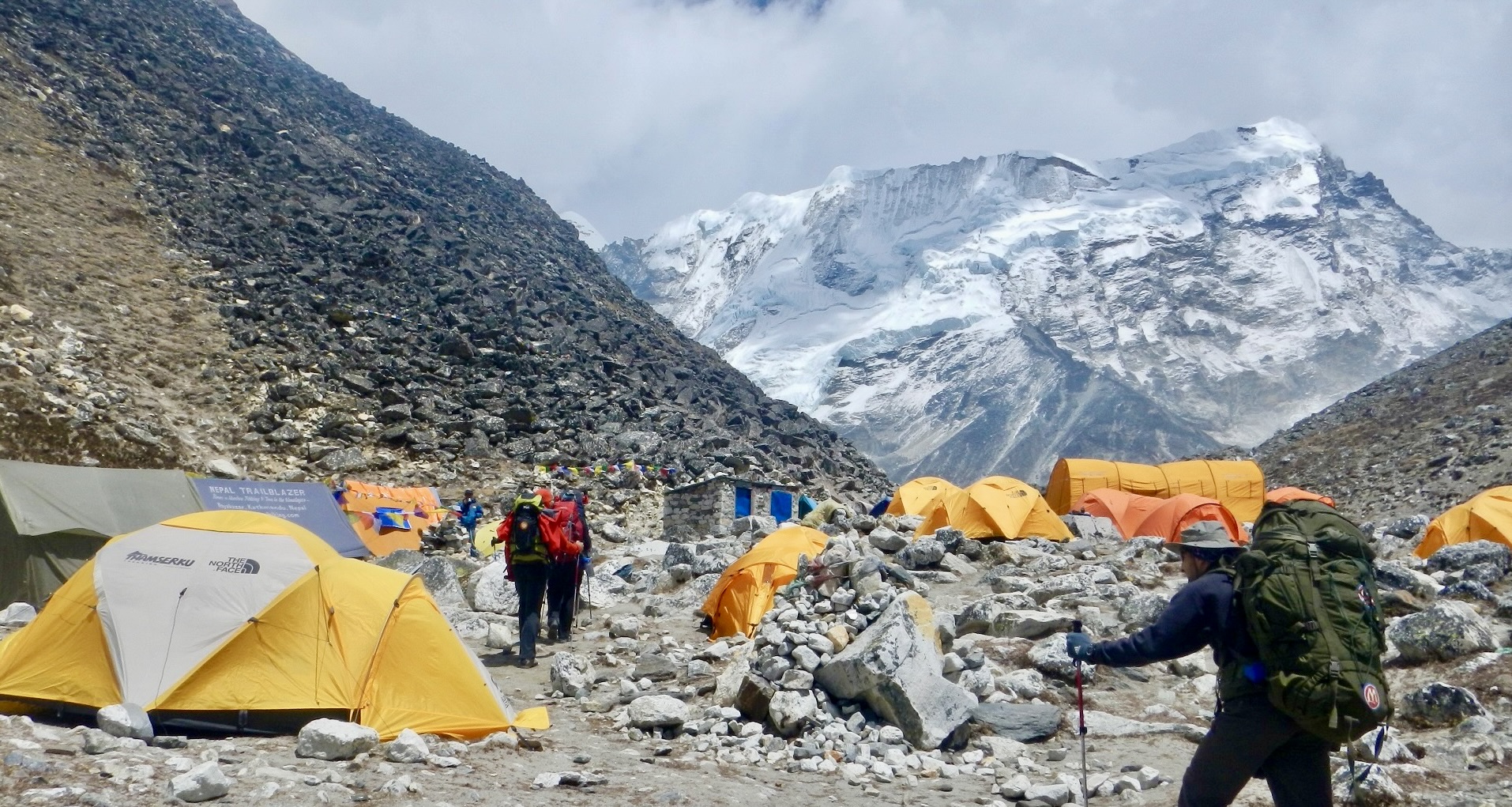
Mental Preparation Strategies
The mental game is where many first-time peak climbers struggle. We've guided hundreds of beginners, and the ones who succeed always have strong mental fortitude.
First, set realistic expectations. Nepal's peaks aren't just physically demanding - they test your mind too. You'll face:
- Long days (sometimes 12+ hours of climbing)
- Sleep deprivation at high camps
- Extreme weather changes
- Physical discomfort and potential altitude issues
Visualization techniques are game-changers. Before your trip:
- Mentally rehearse challenging scenarios
- Imagine successfully navigating difficult sections
- Practice positive self-talk for tough moments
Stress management becomes crucial at altitude. We recommend learning:
- Deep breathing exercises
- Simple meditation techniques
- Mindfulness practices for staying present
Our most successful clients develop a personal mantra or purpose for their climb. Having a "why" that's bigger than the discomfort helps tremendously when things get tough.
Acclimatization isn't just physical - it's mental too. Prepare for the frustration of rest days and slow ascents. Progress on big mountains happens gradually, and accepting this pace is key to success.
Required Documentation and Permits
Navigating Nepal's permit system can be tricky, but we've got you covered. For beginner peaks, you'll need several essential documents:
Climbing Permits: Different peaks have different requirements:
- Peaks below 6,500m require a "Group B" climbing permit
- Popular beginner peaks like Island Peak and Mera Peak have specific fees
National Park Entry Permits: Most climbing areas are within protected regions:
- Sagarmatha National Park (Everest region): $25
- Annapurna Conservation Area: $25
- Langtang National Park: $25
- TIMS Card (Trekker's Information Management System): This is mandatory for all trekkers and climbers, costing $10 for individual trekkers.
Visa Requirements:
- A tourist visa is available on arrival at Kathmandu airport
- Options for 15, 30, or 90 days (we recommend at least 30)
- Bring passport-sized photos and USD for visa fees
We always advise bringing:
- Multiple passport copies
- Extra passport photos (at least 4)
- Travel insurance certificate (must cover high-altitude activities and helicopter evacuation)
Emergency contact information
Permit costs vary seasonally, and regulations change occasionally. We handle all the paperwork for our clients, but it's good to understand what's required. All permits must be arranged before heading to the mountains - there's no option to get them en route.
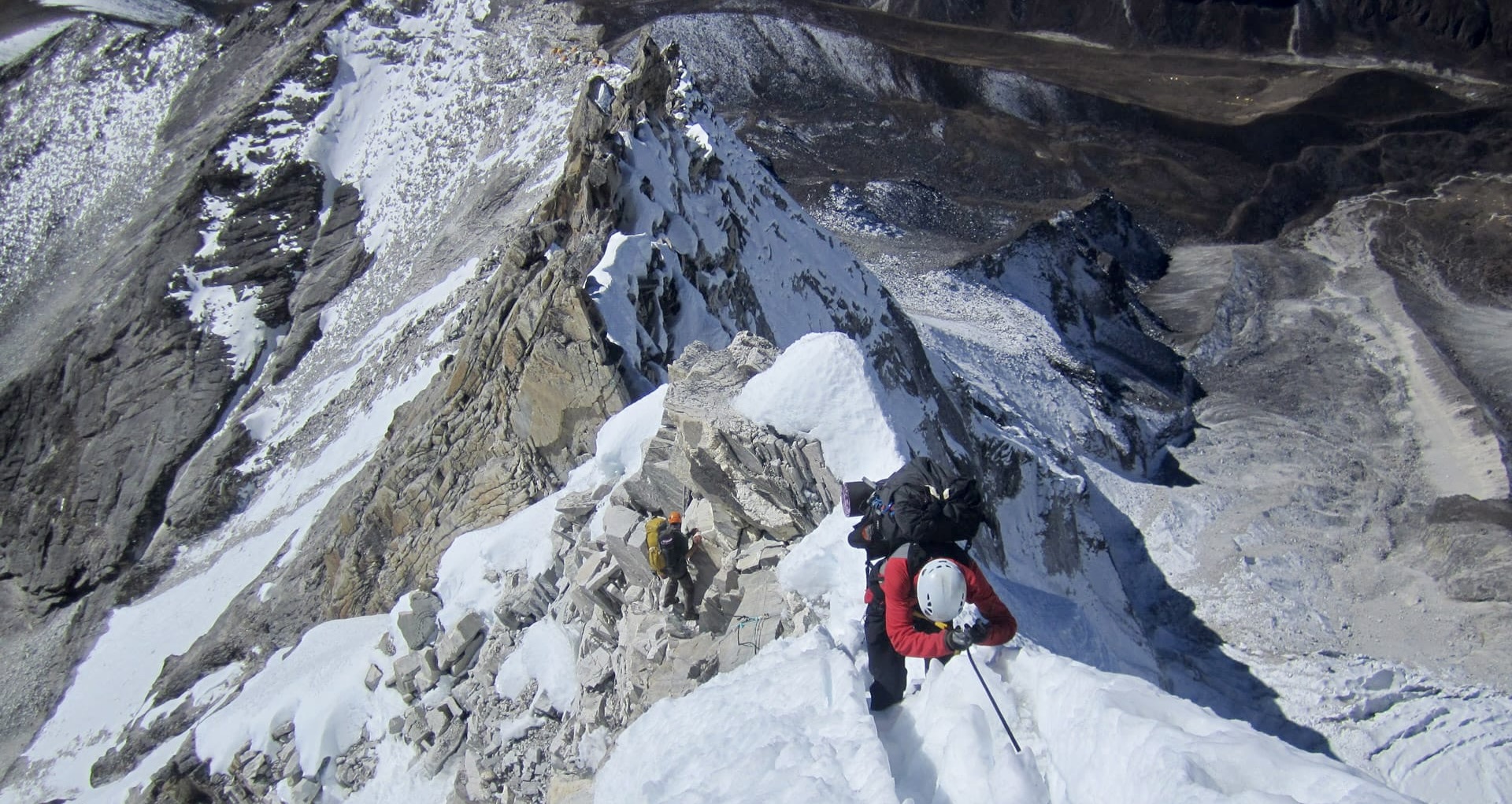
Top Beginner-Friendly Peaks in Nepal
Island Peak (6,189m) - The Perfect First Himalayan Climb
Island Peak sits proudly in the Khumbu region, offering beginners an incredible introduction to Himalayan climbing. We consider this peak ideal for first-timers because it combines a scenic trek through Sherpa villages with a rewarding summit experience. The approach takes you through the famous Everest Base Camp route, where you'll acclimate naturally while soaking in magnificent mountain views.
What makes Island Peak special is its accessibility while still providing genuine climbing challenges. We've guided hundreds of novice climbers up its slopes, and the smile on their faces when they reach the summit tells us everything. The final ridge climb gives you a taste of exposure without being overwhelming - perfect for building your confidence.
Mera Peak (6,476m) - Highest Trekking Peak in Nepal
Mera Peak stands tall as Nepal's highest trekking peak, but don't let that intimidate you! We find it surprisingly approachable for beginners despite its impressive altitude. The climb itself is technically straightforward, with moderate snow slopes rather than complicated ice sections.
The journey to Mera takes you through the less-traveled Hinku Valley, where you'll experience authentic village life away from the busy Everest trails. From the summit, you're rewarded with views of five 8,000m peaks - Everest, Lhotse, Cho Oyu, Makalu, and Kangchenjunga. It's a panorama that few other climbs can match. Our clients consistently rank this view as one of life's most breathtaking moments.
Lobuche East (6,119m) - Spectacular Views of Everest
Lobuche East offers beginners a more technical challenge while remaining within reach of determined novices. We love this peak for its variety - you'll practice basic ice climbing, ridge traversing, and snow walking all in one adventure.
The approach follows the classic Everest Base Camp route, meaning you'll enjoy Khumbu highlights like Namche Bazaar and Tengboche Monastery. From the summit, you're treated to an unforgettable view of Everest, Nuptse, and Ama Dablam that's worth every step of effort. The final push requires focus but isn't overly demanding - a perfect balance for beginners wanting to test their skills.
Chulu East (6,584m) - Annapurna Region's Gem
Tucked away in the spectacular Annapurna region, Chulu East offers beginners a less crowded alternative to the Khumbu peaks. We've found this peak perfect for those who want to combine their climbing adventure with one of the world's most beautiful treks - the Annapurna Circuit.
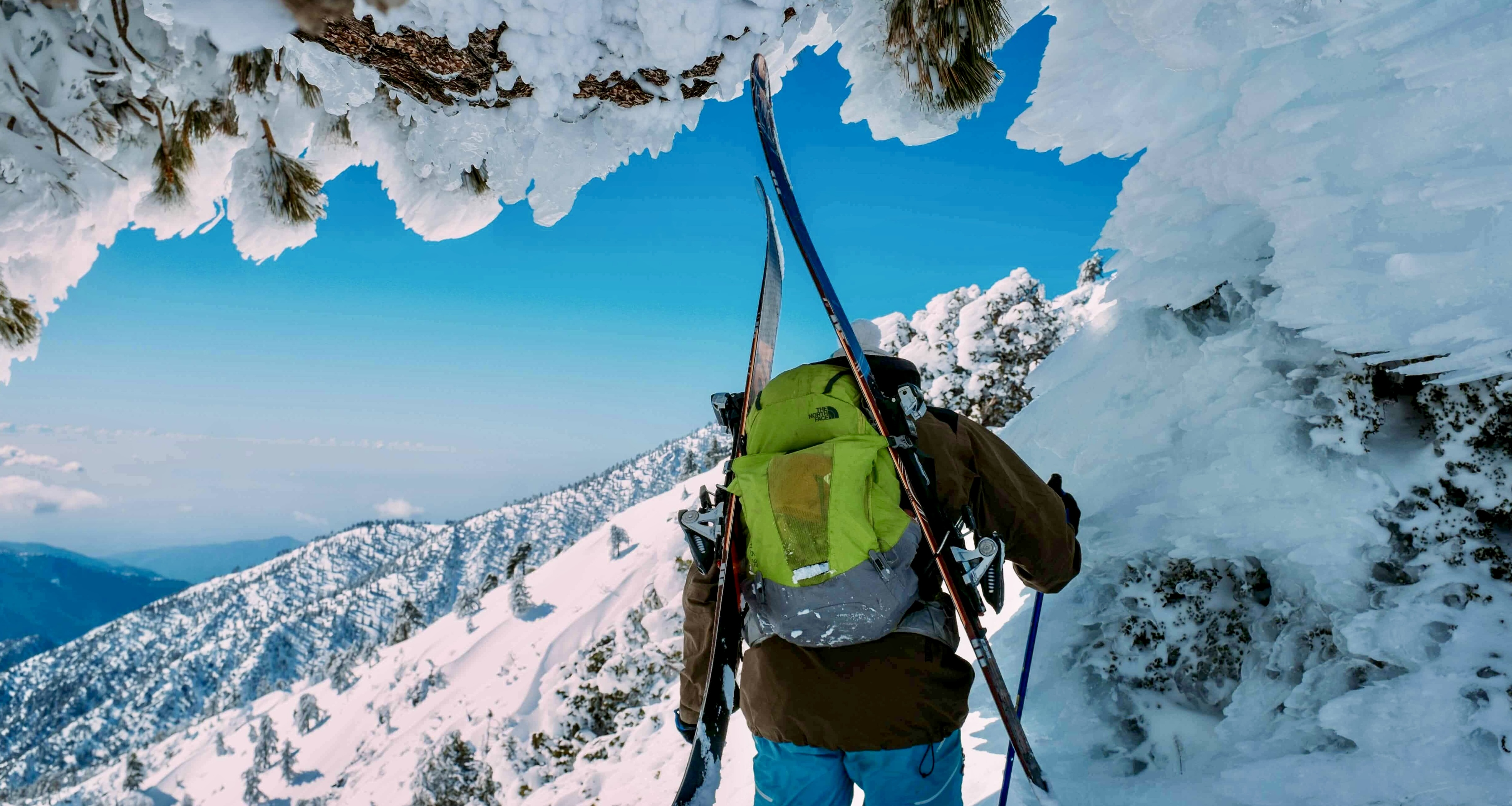
The climbing sections involve moderate snow slopes and a straightforward ridge, making it technically accessible for novices while still delivering a true mountaineering experience. The summit rewards you with incredible views of the Annapurna range and Manaslu. What we love most about Chulu East is the cultural richness of the approach, passing through diverse ethnic villages where traditions remain vibrant and authentic.
Yala Peak (5,520m) - Shorter Duration Option
Short on time but still want to summit a Himalayan peak? Yala Peak is our go-to recommendation. At 5,520m, it's lower than other beginner peaks but delivers a genuine climbing experience that can be completed in just 10-12 days.
Located in the stunning Langtang Valley, Yala Peak requires minimal technical skills while still giving you that summit thrill. We find it perfect for testing your response to altitude before attempting higher peaks. The climb involves easy to moderate snow slopes, with basic crampon and ice axe skills sufficient for success. From the top, you'll enjoy magnificent views of Langtang Lirung, Dorje Lakpa, and even distant Shishapangma in Tibet.
Essential Gear and Equipment
Climbing Hardware Basics
When you're starting out with peak climbing in Nepal, getting the right gear can seem overwhelming. We've guided hundreds of beginners through their first summits, and we know exactly what you need.
For basic climbing, we always recommend:
- Ice axe: A versatile 60-70cm axe works for most beginners
- Crampons: 12-point crampons compatible with your boots
- Carabiners: Bring 4-6 locking and 4-6 non-locking ones
- Harness: Get one specifically designed for mountaineering, not rock climbing
- Helmet: No negotiating here - your brain needs protection!
- Ascending device/Jumar: Essential for fixed rope sections
- Figure-8 descender: For controlled descents on steep terrain
Don't blow your budget on the fanciest gear right away. We recommend renting specialized equipment from us in Kathmandu for your first climb. This saves you money and gives you a chance to test what works before investing.
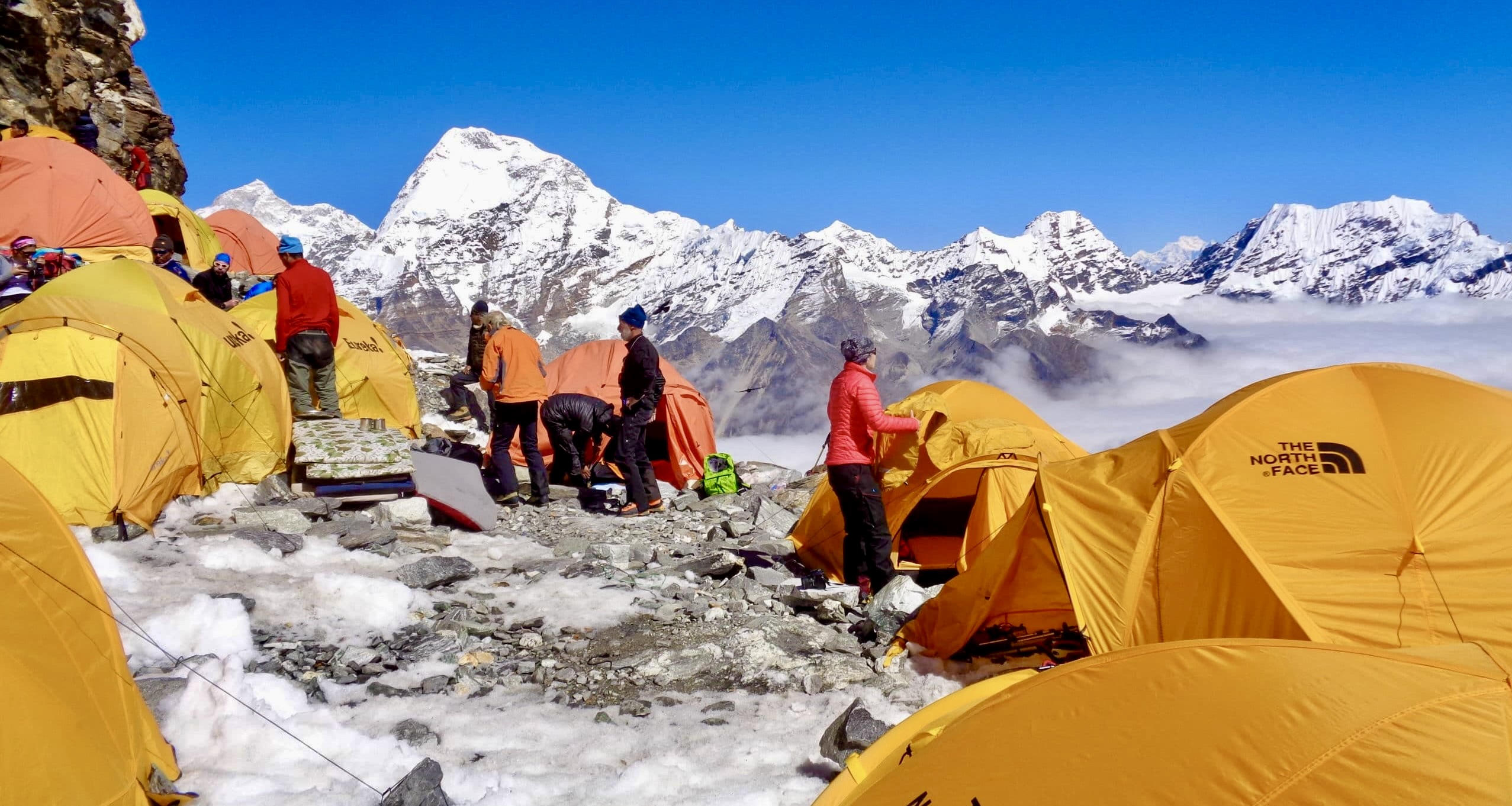
Appropriate Clothing Systems
The secret to staying comfortable in the Himalayas? Layering. We live by the three-layer system:
- Base Layer: This sits against your skin and wicks away sweat. Merino wool or synthetic materials work best - absolutely no cotton! Cotton holds moisture and can cause dangerous cooling.
- Mid Layer: Your insulation layer traps body heat. Fleece jackets and down vests are perfect here.
- Outer Layer: Your shield against wind, rain and snow. Look for a durable, waterproof and breathable jacket and pants.
For extremities:
- Two pairs of gloves (thin liner + heavy insulated mittens)
- Warm hat that covers ears
- Buff/neck gaiter
- High-quality mountaineering boots rated for at least -20°C
- Thick socks (3-4 pairs minimum)
- Personal Safety Equipment
Safety isn't just a priority - it's everything. Here's what we consider essential:
- Avalanche beacon: Even on beginner peaks, these save lives
- Climbing helmet: Must fit properly and be worn whenever there's rockfall risk
- Glacier glasses: Need 100% UV protection with side shields
- Headlamp: Bring extra batteries! Summit days often start at midnight
- First aid kit: Include blister treatment, pain relievers, and altitude sickness medication
- Emergency blanket: Lightweight but potentially lifesaving
We also recommend a personal locator beacon for emergencies. They're expensive but worth every penny when cell service is nonexistent.
Packing Smart for Himalayan Conditions
We've seen too many climbers struggle with overloaded packs. Here's our approach:
Pack everything in waterproof stuff sacks, color-coded by category (sleep gear, clothing, food). This keeps the organization simple when you're exhausted at camp.
For a typical 2-week beginner peak:
- 65-75L backpack (with rain cover)
- -20°C rated sleeping bag
- Insulated sleeping pad (R-value of at least 4)
- Lightweight trekking poles with snow baskets
- 2 water bottles (insulated to prevent freezing)
- High-calorie snacks that won't freeze
Remember to distribute weight properly - heaviest items close to your back and centered. Your shoulders will thank you after 8 hours of trekking!
The weather in the Himalayas changes rapidly, so we always pack for conditions worse than forecasted. An extra mid-layer might seem unnecessary during planning, but becomes priceless at 18,000 feet when temperatures plummet unexpectedly.
Working with Everest Sherpa Expeditions
Our Specialized Beginner Climbing Programs
We've crafted our beginner climbing programs specifically for those taking their first steps into the magical world of Himalayan mountaineering. Unlike other companies that lump all climbers together, we recognize that beginners need special attention. Our programs focus on gradual acclimatization, extended training periods, and climbing peaks like Island Peak (6,189m) and Mera Peak (6,476m) that offer the perfect balance of challenge and achievability.
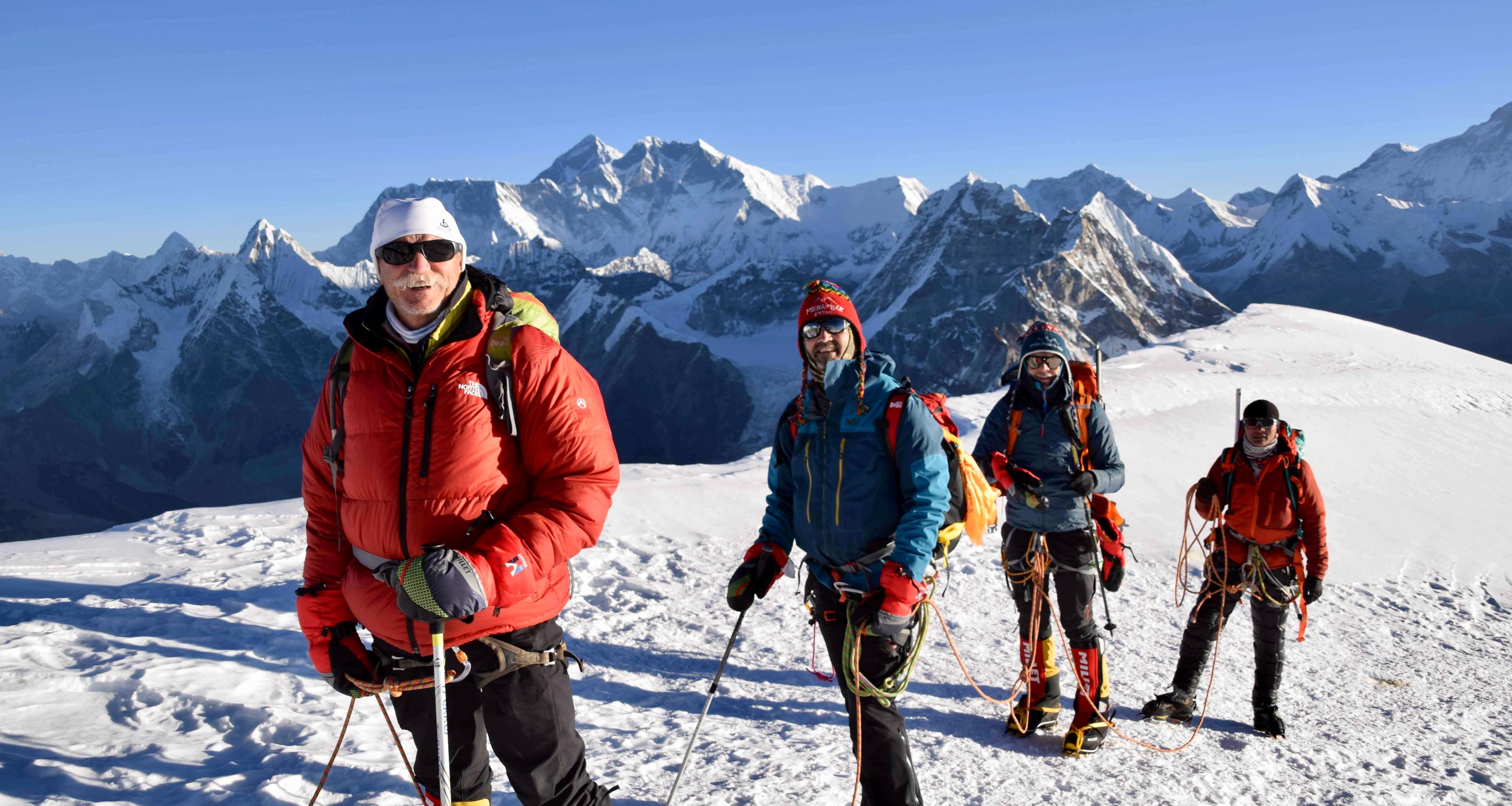
Each program starts with comprehensive pre-climb training right here in Kathmandu, where we cover everything from basic rope techniques to proper use of crampons and ice axes. The beauty of our approach? You don't need to arrive with any prior experience – just bring your enthusiasm and reasonable fitness level.
Expert Sherpa Guides and Their Role
Our Sherpa guides aren't just guides – they're your mentors, safety net, and friends throughout your journey. Born and raised in the high Himalayan valleys, our team members have summit experiences on Everest and other 8000m peaks, but what truly sets them apart is their ability to work with beginners.
Each guide is certified in mountaineering and wilderness first aid, speaks excellent English, and possesses that special knack for knowing exactly when to push you and when to provide support. Many of our clients tell us that the bond they formed with their Sherpa guide became the highlight of their trip.
We maintain a 2:1 client-to-guide ratio on all beginner expeditions – significantly better than the industry standard – ensuring you receive personalized attention throughout your climb.
Safety Protocols and Emergency Procedures
Safety isn't just a priority for us – it's our obsession. Every expedition carries satellite phones, comprehensive medical kits, and portable hyperbaric chambers for altitude emergencies. We've established clear evacuation procedures with helicopter services on standby throughout the climbing season.
Before each expedition, we conduct mandatory safety briefings covering everything from proper hydration to recognizing altitude sickness symptoms. Our guides perform daily health checks, monitoring your oxygen levels and overall well-being.
What truly distinguishes our approach is our conservative climbing philosophy. Weather looking questionable? We wait. Not feeling 100%? We rest. The mountains have stood for millions of years – they'll be there when conditions improve.
All-Inclusive Package Benefits
When we say all-inclusive, we mean it. From the moment you land at Tribhuvan International Airport until your departure, everything is handled. Our packages include:
- Private airport transfers
- Quality accommodations in Kathmandu and on the mountain
- All necessary permits and fees
- Complete climbing equipment rental options
- All meals during the expedition
- Supplemental oxygen systems for higher peaks
- Comprehensive pre-climb training
The real benefit? Peace of mind. No hidden costs, no surprise "equipment rental fees," no last-minute permit charges. We've seen too many climbers arrive in Nepal only to discover their "budget" package excludes essentials.
With Everest Sherpa Expeditions, your focus stays where it belongs – on the incredible journey you're undertaking in the world's most magnificent mountains.
Practical Tips for Success
Acclimatization Strategies That Work
The mountains don't care about your timeline. We've seen too many climbers rush their ascent only to be forced back down with altitude sickness. Our tried-and-true approach is "climb high, sleep low." We trek up to higher elevations during the day, then descend to sleep at lower altitudes, giving our bodies time to adapt.
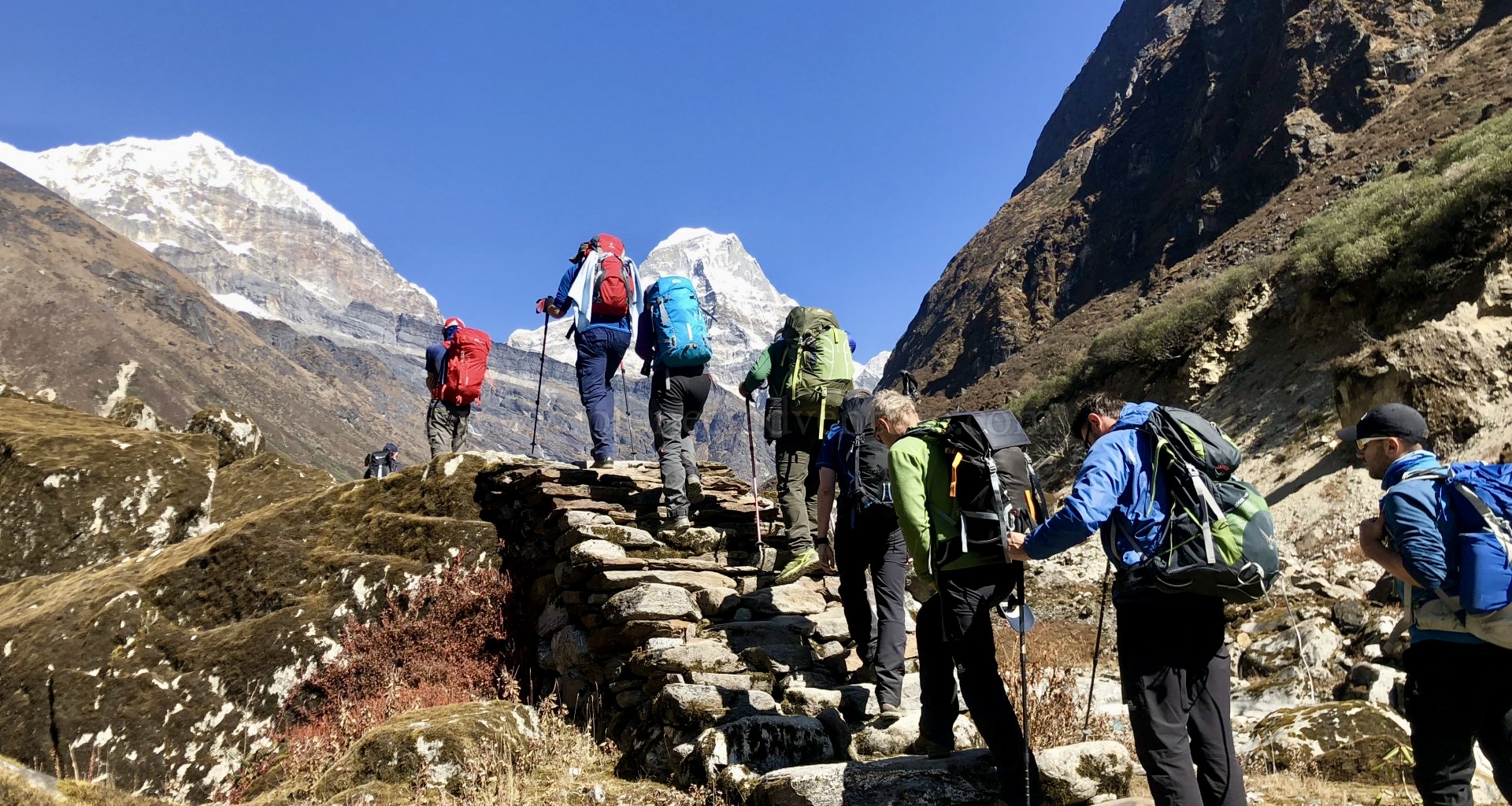
Hydration is absolutely critical. We drink at least 4-5 liters of water daily during acclimatization, even when we don't feel thirsty. A good rule of thumb: if your urine isn't clear, you need more water.
Rest days aren't optional - they're essential. We build in acclimatization days every 1,000 meters of elevation gain. These aren't wasted days; they're when your body makes the adaptations needed for higher altitudes.
Common Mistakes to Avoid
The biggest mistake we see? Climbers are pushing through symptoms of altitude sickness. Headaches, nausea, and dizziness aren't badges of honor - they're warning signs. We never ignore them, and neither should you.
Packing too heavy is a rookie error. Every unnecessary gram becomes torture at altitude. We've refined our gear lists over years of experience to include only what's truly essential.
Skimping on training leads to disappointment. Peak climbing requires endurance, strength, and mental fortitude that can't be developed overnight. We start our training regimen at least 4-6 months before the climb.
Communication During Your Climb
Cell service exists at many base camps now, but don't count on it higher up. We always bring two-way radios for team communication and a satellite phone for emergencies.
Clear hand signals are crucial when the wind makes verbal communication impossible. We establish these signals during orientation and practice them regularly throughout the climb.
Daily team meetings keep everyone informed about weather conditions, route changes, and individual health status. These check-ins build team cohesion and ensure safety concerns are addressed immediately.
Managing Expectations vs. Reality
Summit fever is real, and it's dangerous. We make it clear from day one: the mountain will still be there tomorrow, but you might not be if you make poor decisions. We're not afraid to turn back when conditions aren't right.
The weather in the Himalayas changes rapidly. What looks like a perfect summit day can deteriorate in minutes. We build buffer days into every itinerary and maintain flexibility with our summit attempts.
The climb will be harder than you imagine. There will be moments when you question why you came. But we promise: the struggle makes the achievement that much sweeter. The pride of standing on a Himalayan peak is worth every challenging step.
Photography Tips at High Altitude
Batteries drain incredibly fast at altitude and in cold. We keep spares in inside pockets, close to body heat, and never leave cameras out overnight.
The light at high altitude is intense and creates extreme contrasts. We underexpose slightly to preserve details in bright snow and use polarizing filters to cut glare.
Morning and evening golden hours offer magical lighting, but summit photos often happen at midday. We take multiple exposures and composition variations to ensure we capture that once-in-a-lifetime summit moment.
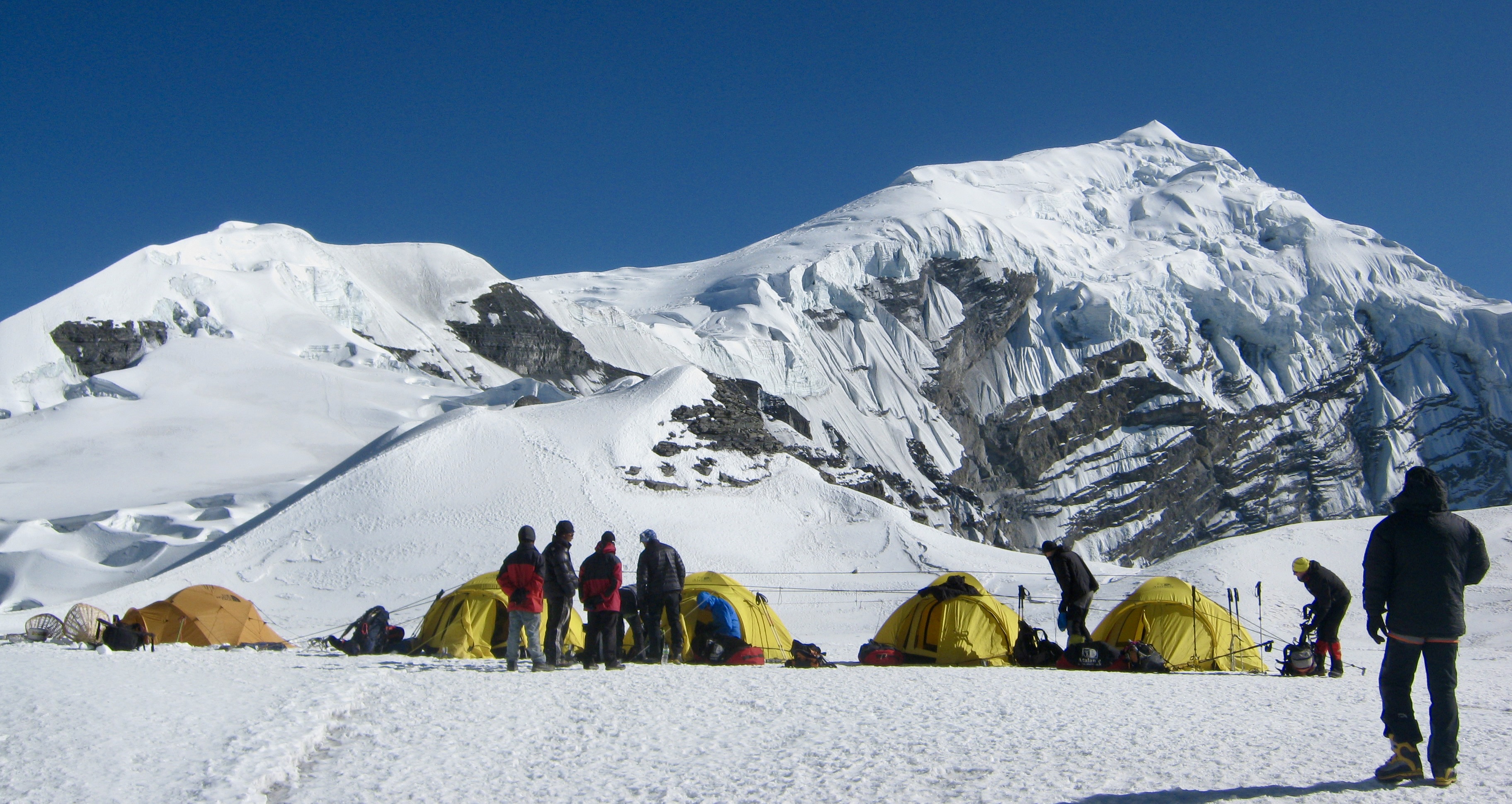
The cold makes camera operation difficult with gloves. We practice operating our equipment with thin liner gloves before the climb and use camera straps that attach to our harnesses to prevent drops.
Embarking on a peak climbing adventure in Nepal offers beginners an extraordinary opportunity to challenge themselves while experiencing the majestic Himalayan landscape. With proper preparation, appropriate gear, and selection of beginner-friendly peaks like Island Peak or Mera Peak, first-time climbers can safely achieve their mountaineering dreams. Understanding the physical demands, acclimatization requirements, and technical skills needed will set the foundation for a successful expedition.
Everest Sherpa Expeditions provides crucial support through expert guides, comprehensive training, and logistical assistance that can make all the difference for novice climbers. Remember that patience, mental resilience, and respect for the mountains are just as important as physical fitness. With the right mindset and support system, your first Nepali peak climbing experience can be the beginning of a lifelong passion for high-altitude adventure. Start planning your journey today and discover the unparalleled satisfaction of standing atop your first Himalayan summit.
If you need any further information, please contact us by email: [email protected], Phone: +977- 980 195 6248 (WhatsApp).

